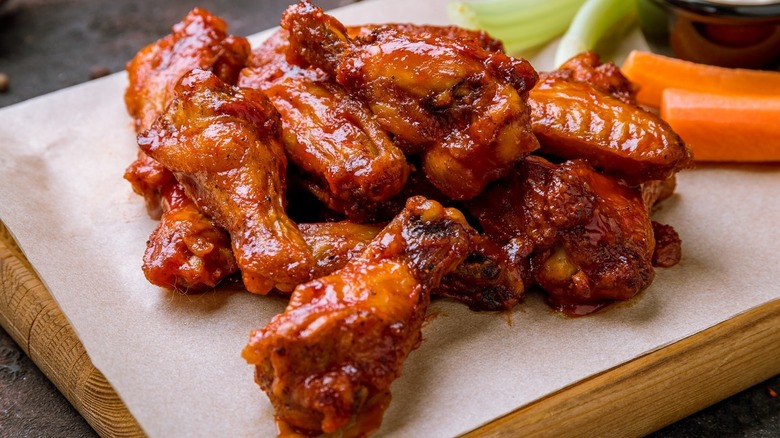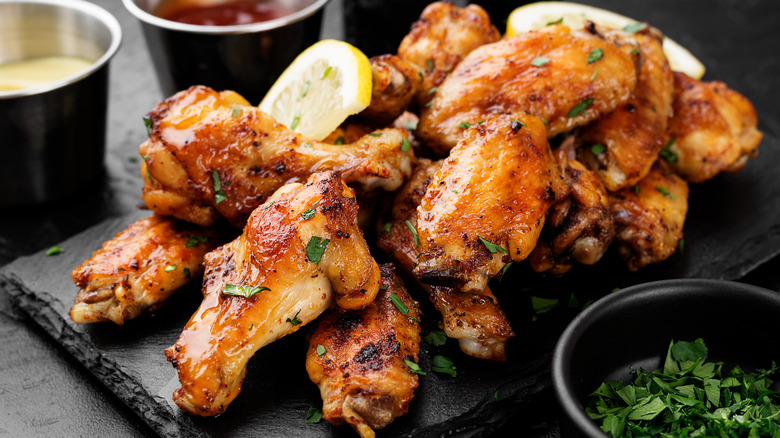Why You Should Consider Double-Frying Your Chicken Wings
Joining the ranks of chicken tenders and drumsticks is the fan-favorite of every tailgate and barbeque: the humble chicken wing. According to the National Chicken Council, it was projected that Americans would eat an astounding 1.4 billion chicken wings just during Super Bowl in 2020 alone — a testament to the popularity of the beloved bite-sized morsels.
What makes a chicken wing so popular? Is it tasting that delicious hot sauce on your lips and fingers long after you've finished eating? Is it that satisfying crunch of the deep-fried skin giving away to the tender, juicy meat on the inside? Vox theorizes that perhaps their popularity is a matter of convenience due to the cheap cost of a wing compared to a whole chicken breast. No matter what it is, there's no denying that a lot of people love a good hot wing and a cold drink.
One thing no one likes, however, is a poorly-cooked chicken wing — a soggy, cold-in-the-middle wing dipped in lackluster sauce with gummy, chewy skin and dry flavorless meat. It is every tailgater's nightmare. Indeed, even the New York Times says that one of the keys to a great wing is that crispy skin on your first bite. According to some folks, the process of "double-frying" can help prevent you or your guests from settling for chewy, rubbery chicken wings.
Double-frying can give you crispier skin and juicier meat
According to Southern Living's Kaitlyn Yarborough, the process of double-frying is a bit more complex than one-and-done frying. The first step of the process is to fry the wings in a lower temperature oil, the suggested temperature around 270 degrees Fahrenheit. This "first-fry" allows the meat to get juicy and tender on the inside, rather than drying up from intensely hot oil. The second step, Yarborough says, can go one of two ways. You can either freeze the wings overnight for the following day, or simply let them cool down for frying later on that same day. Whichever you choose, the "second-fry" is done with oil at a higher temperature between 350-375 degrees Fahrenheit until the wings are fully cooked and have achieved their signature golden-brown skin.
Just how successful is the "double-frying" technique? America's Test Kitchen explains that chicken skin is mostly just fat and water, and when that water evaporates, the fat begins to dry into crispy skin. Double-frying helps by allowing chicken wings to rest in between dunks in the oil. More water also slowly evaporates off the skin until it's time for the final frying session. Frying for a long time in hot oil can help all of the water evaporate, but this usually leaves the meat overcooked and dry. Double-frying is a bit more involved than just leaving your wings in a deep fryer, but it has a much crispier result.

